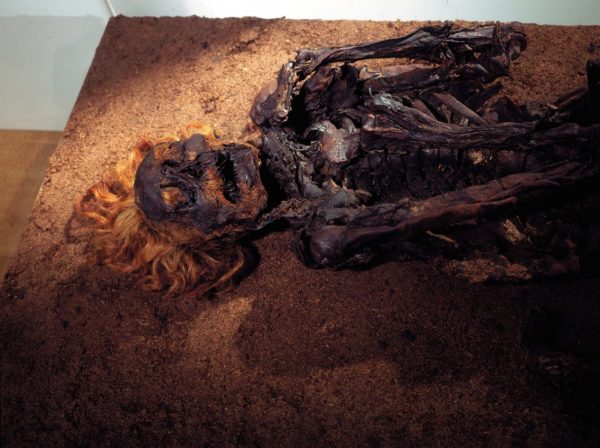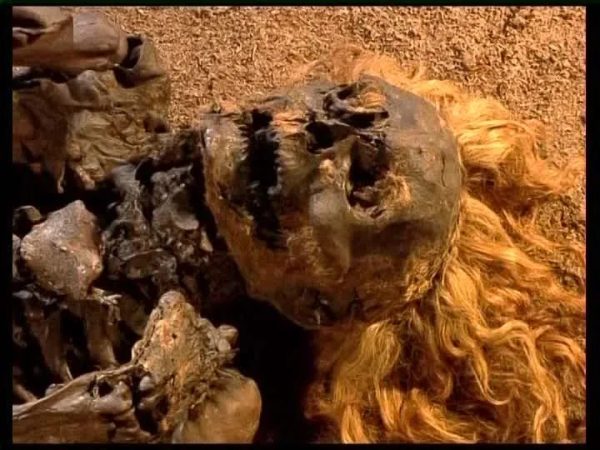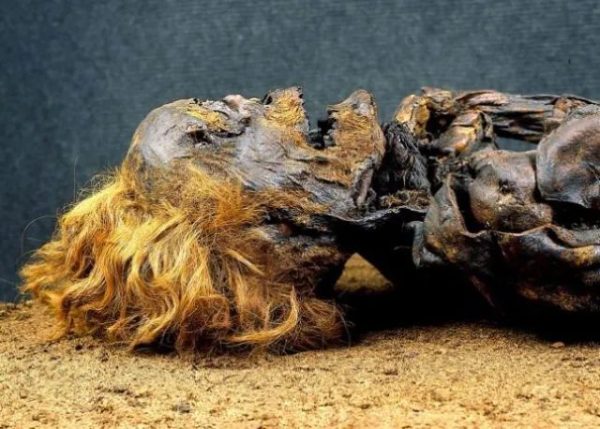
In the realm of archaeological discoveries, few capture the imagination quite like Roter Franz, also known as the “Neu Versen Man.” Unearthed from the depths of the Bourtanger swamp, nestled between Holland and Germany, this remarkably preserved mummy has intrigued researchers and history enthusiasts alike since its discovery in 1900.
Sporting a strikingly red beard, hair, and eyebrows, Roter Franz’s story unveils a glimpse into a life lived centuries ago, shrouded in mystery and marked by intriguing details.
Exploring Roter Franz’s Origins:
Roter Franz, believed to have lived between 220 and 430 AD, met his demise in a manner that leaves lingering questions to this day.

The distinct red coloration of his features is attributed to the acidic properties of the peat bog where he was found, a unique phenomenon that has preserved his likeness for centuries. Despite the passage of time, the clarity of his mummified form offers valuable insights into his life and the circumstances surrounding his untimely death.
Unraveling the Life of Roter Franz:
Analysis of Roter Franz’s remains has provided researchers with a wealth of information about his life and activities. Aged between 25 and 32 years at the time of his death, he bore the physical markers of a seasoned jockey, with evidence of significant muscular development in his thighs—a testament to prolonged periods spent on horseback. Furthermore, the presence of healed injuries, including a broken clavicle and a deep wound on his arm, hints at a life fraught with physical challenges and encounters.
Speculations and Hypotheses:
The enigmatic nature of Roter Franz’s identity has led to various speculations regarding his origins and occupation. One prevailing theory suggests that he may have been a professional rider in the service of the Roman Legions, a notion supported by his robust physique and the nature of his injuries.

Standing between 180 and 185 centimeters tall, his stature further fuels speculation about his potential role in ancient societies and the circumstances that led to his demise.
Significance and Legacy:
Beyond its intrinsic historical value, the discovery of Roter Franz serves as a reminder of the enduring mysteries that lie buried beneath the earth’s surface. His mummified form offers a tangible connection to the past, allowing researchers to piece together fragments of ancient life and shed light on civilizations long gone. Moreover, his story captivates the public imagination, inspiring curiosity and fascination with the mysteries of the past.
Conclusion:
In the annals of archaeological finds, few discoveries rival the intrigue and fascination sparked by Roter Franz, the mummified man with vibrant red features. From the depths of the Bourtanger swamp to the halls of modern research institutions, his story continues to captivate and inspire awe, offering a window into a bygone era and reminding us of the enduring allure of history’s mysteries. As researchers delve deeper into his enigmatic past, Roter Franz stands as a testament to the timeless quest for understanding our collective heritage.





